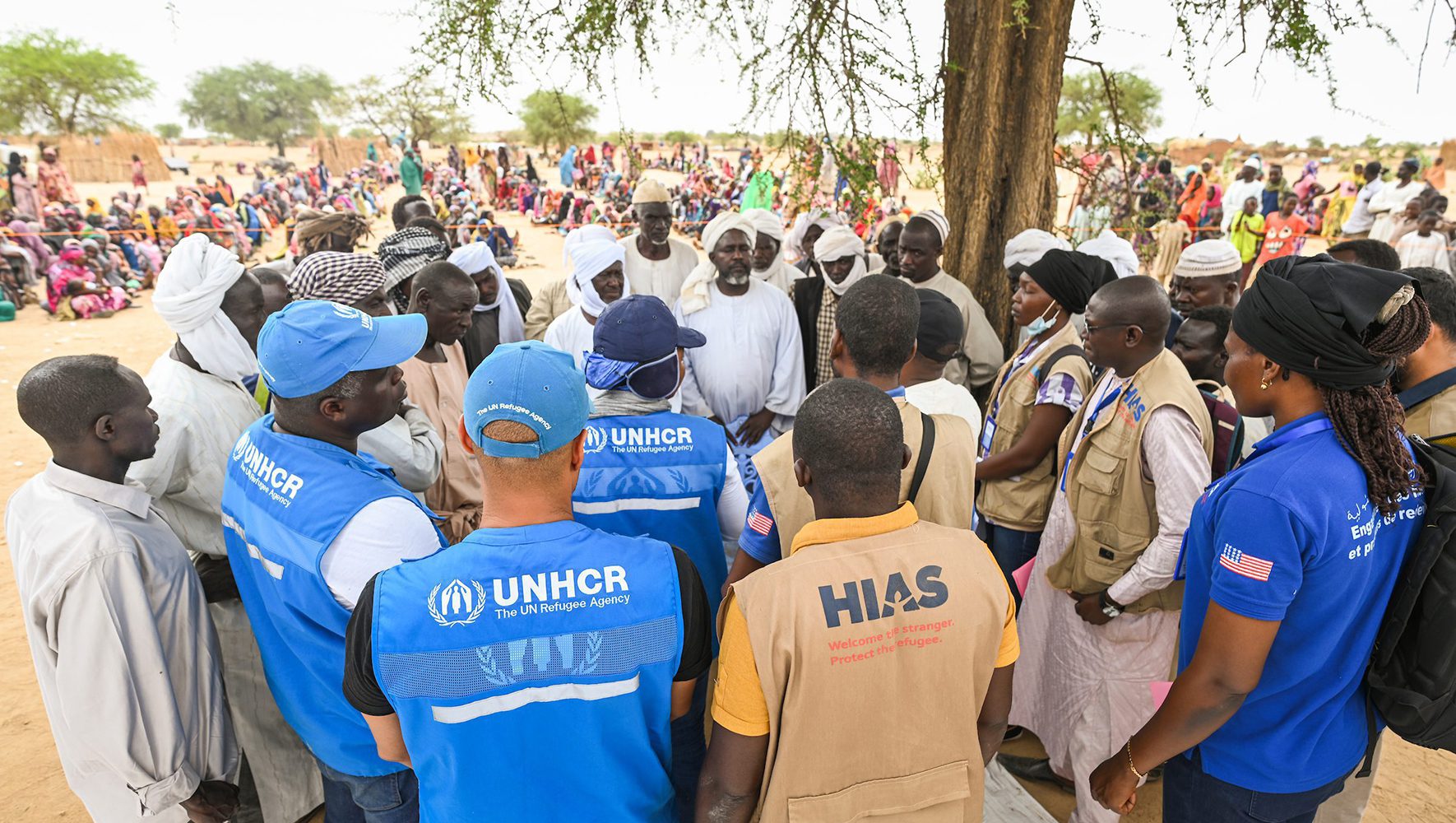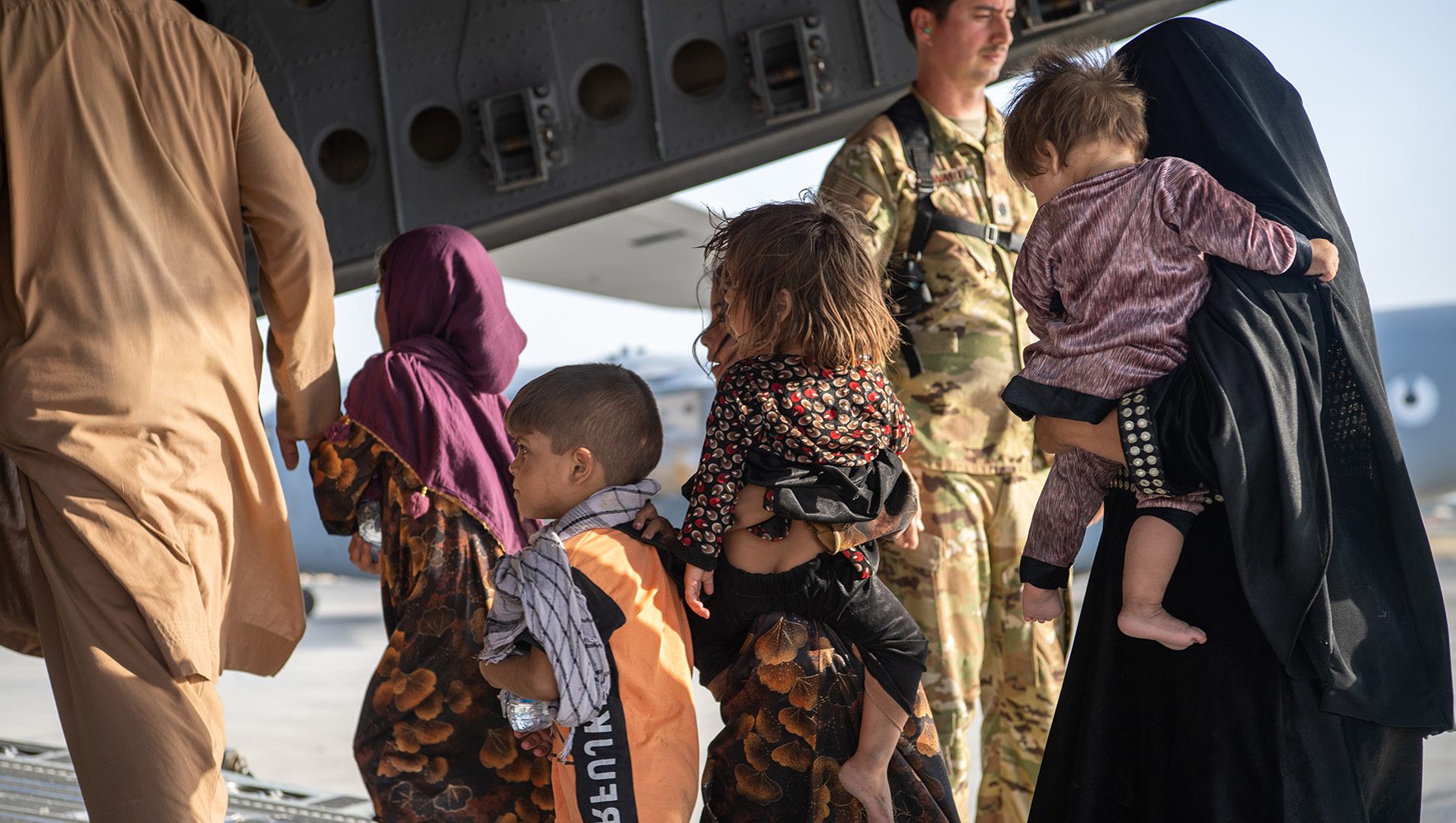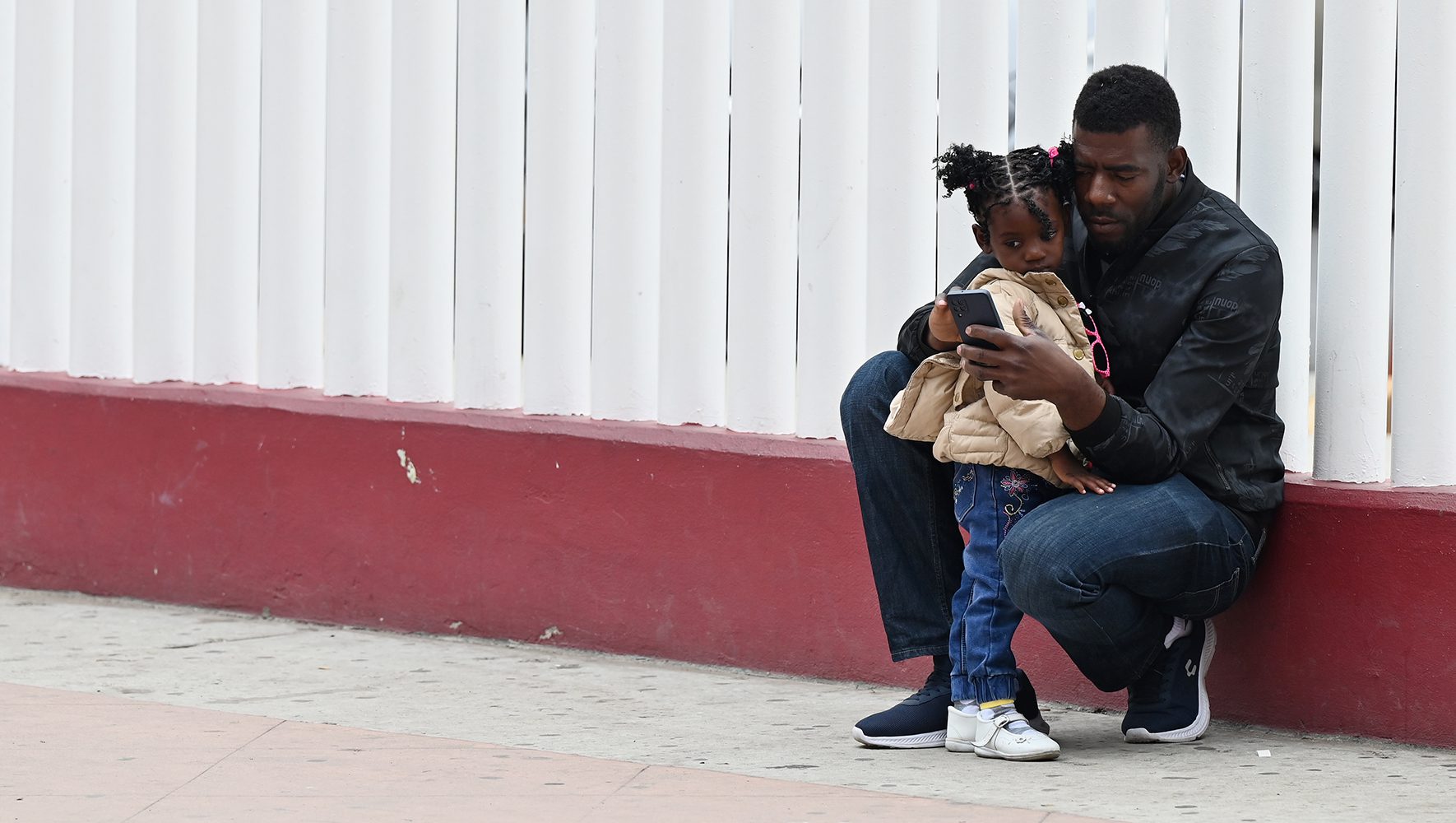UNHCR: Number of Displaced Worldwide Exceeds 120 Million
By Sharon Samber
HIAS.org
Jun 20, 2024

UNHCR teams and HIAS prepare to distribute relief kits to newly arrived Sudanese refugees at the Madjigilta site in Chad's Ouaddaï region, on the border with Sudan on May 8, 2023. (UNHCR/Colin Delfosse)
The UNHCR Global Trends report for 2023, released late last week, indicated that, as of this writing, the number of displaced people worldwide now exceeds 120 million. This figure, which refers to those forcibly displaced as a result of persecution, conflict, violence, and human rights violations, has grown by 8% since 2022, and has more than doubled in the last 10 years.
“While we celebrate the resilience of people who are refugees on World Refugee Day, recognizing their talents and human potential, the jump from 110 to 120 million is nothing to celebrate,” said HIAS President and CEO Mark Hetfield. “If displaced persons cannot safely and voluntarily return home, the international community needs to work harder to make sure they have a place to call home, so they are refugees no more. That work starts with each one of us, welcoming the refugees and asylum seekers who live in our own communities.”
One in 69 people globally — or 1.5% of the entire world’s population — was forcibly displaced this past year. In 2023, the global refugee population increased by 7% to 43.4 million, a number that includes 5.8 million people in need of international protection, predominantly from Venezuela, and 6 million Palestinian refugees under UNRWA’s mandate.
The report discussed several crises to which HIAS is connected. These include the 10.8 million Sudanese who remained forcibly displaced, many to neighboring Chad, by violent conflict; and the conflict in Gaza, where many of the 2.2 million inhabitants face acute food insecurity and an imminent threat of famine. Approximately three-quarters of a million people became newly displaced within Ukraine in 2023 — and while the number of people remaining internally displaced in Ukraine decreased to 3.7 million, a total of 9.7 million Ukrainians, nearly a quarter of the prewar population, remained forcibly displaced overall.
The report, which explains how and why these worldwide numbers changed over the past year, said that there are now 68.3 million internally displaced people and 6.9 million asylum seekers across the globe. Low- and middle-income countries hosted 75% of the world’s refugees and other people in need of international protection. Just over 6 million displaced people returned to their areas or countries of origin in 2023, including 5.1 million internally displaced people and over 1 million refugees.
“If displaced persons cannot safely and voluntarily return home, the international community needs to work harder to make sure they have a place to call home, so they are refugees no more.”
Mark Hetfield, HIAS President and CEO
Key points from the 2023 report:
- In total, UNHCR reports 4.4 million stateless people. About 1.3 million stateless people worldwide are also displaced. Most of them are Rohingya, either internally displaced in Myanmar or refugees, mainly in neighboring countries. 32,200 stateless people did have their nationality confirmed or acquired citizenship during the year.
- Relative to its population, Aruba, where HIAS has an office, hosted the largest number of refugees (1 in 5).
- The United States of America was the world’s largest recipient of new individual asylum applications, with 1.2 million.
- Lebanon continues to be the highest, per capita, host country for refugees globally, with an estimated 1.5 million Syrians and 11,200 asylum seekers and refugees of other nationalities.
- Climate change is exacerbating the protection needs and risks for forcibly displaced people and is contributing to new and protracted displacement. The report cited impact such as extreme weather events and scarcer natural resources and the increased exposure of women to violence during disasters. Without adaptation, the report warns, climate change is expected to increasingly, and disproportionately, affect forcibly displaced people.
The trends of protracted crises and the higher intensity of conflicts coupled with a reduced appetite of donors underscore the urgent protection needs and risks, according to Raphael Marcus, HIAS’ chief programs officer.
“HIAS’ protection efforts will continue to emphasize the rights of all forcibly displaced people,” Marcus said. “We also recognize the centrality of the local voices and the needs of the host communities, as well as climate change’s disproportionate impact on displaced populations, in our program design and operations.”
Your contribution can make a difference this World Refugee Day. Donate here.





